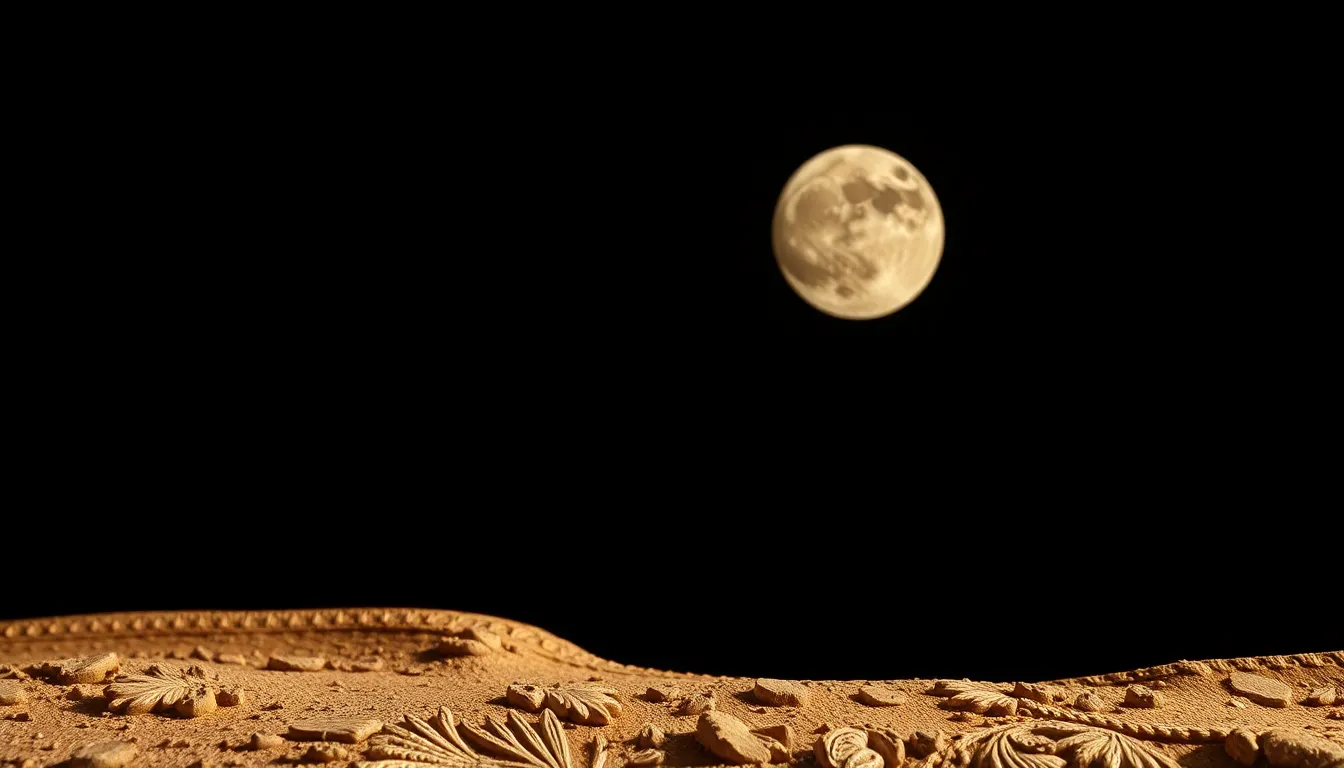The Symbolism of the Moon in Egyptian Jewelry and Art
I. Introduction
The moon has held a profound significance in ancient Egyptian culture, often seen as a powerful celestial body that influenced both the natural world and human affairs. Its phases were tracked closely, impacting agriculture, religious ceremonies, and daily life. The moon’s ethereal glow inspired countless artistic expressions and adorned jewelry, symbolizing various aspects of existence.
This article aims to explore the deep-rooted symbolism of the moon in Egyptian jewelry and art, shedding light on how this celestial body was revered and represented in ancient Egyptian society.
II. The Moon in Egyptian Mythology
In Egyptian cosmology, the moon was considered a vital element that governed the night sky. It played a crucial role in the cycle of life and death, reflecting the eternal struggle between light and darkness.
Several deities were associated with the moon, including:
- Thoth: The god of wisdom, writing, and magic, often depicted with an ibis head. He was believed to control the lunar calendar.
- Khonsu: The youthful moon god, representing the ever-changing phases of the moon. He was a protector of travelers at night.
- Isis: Though primarily known as a goddess of motherhood and magic, she was also linked to the moon and its nurturing qualities.
III. The Moon’s Phases and Their Symbolic Meanings
The Egyptians observed the moon’s phases closely, attributing various symbolic meanings to each stage:
- New moon: Symbolizing rebirth and renewal, the new moon was a time of new beginnings and opportunities.
- Full moon: Representing completeness and fulfillment, the full moon embodied the peak of energy and manifestation.
- Waning moon: Associated with reflection and introspection, the waning moon encouraged contemplation and the release of the past.
IV. Moon Symbolism in Egyptian Jewelry
Egyptian jewelry often incorporated lunar motifs, reflecting the moon’s importance in their spiritual and everyday lives. Artisans used a variety of materials and techniques to craft these pieces:
- Materials: Common materials included gold, silver, lapis lazuli, and turquoise, each chosen for their beauty and symbolic meanings.
- Techniques: Techniques such as inlay, engraving, and filigree were employed to create intricate designs that often featured crescent moons and full moon symbols.
Iconic pieces featuring moon motifs included:
- Necklaces: Often adorned with pendants shaped like moons or featuring moonstone, believed to bring protection and guidance.
- Amulets: Worn for protection, these amulets frequently depicted lunar symbols, invoking the blessings of moon deities.
V. The Moon in Egyptian Art
The representation of the moon in Egyptian art was both literal and symbolic. In paintings and sculptures, the moon was often depicted alongside solar imagery, illustrating the balance between night and day. Common representations included:
- Wall paintings: Many tomb paintings featured celestial scenes, with the moon and stars symbolizing the afterlife.
- Sculptures: Statues of moon deities were placed in temples, serving as focal points for worship and reverence.
In religious contexts, lunar imagery carried deep symbolic interpretations, often associated with the cycles of life, fertility, and the divine feminine.
VI. The Connection Between the Moon and Femininity
The moon has long been associated with femininity, fertility, and motherhood. In Egyptian culture, this connection was particularly strong, as the moon’s cyclical nature mirrored the cycles of women’s lives.
Key aspects of this connection include:
- The moon as a symbol of fertility: Just as the moon influences the tides, it was believed to influence women’s menstrual cycles and fertility.
- Comparisons with other cultures: Many cultures, such as the Greeks and Romans, also linked the moon with women, further emphasizing its role as a feminine symbol.
VII. The Influence of Lunar Symbolism on Modern Jewelry and Art
The fascination with lunar symbolism continues to inspire contemporary jewelry and art. Many modern designers draw upon ancient Egyptian motifs, creating pieces that resonate with the mystique of the moon.
Some notable influences include:
- Revival of designs: Contemporary jewelry often features crescent moons and lunar imagery, reflecting the enduring appeal of these ancient symbols.
- Modern aesthetics: The moon’s symbolism is integrated into various artistic expressions, evoking feelings of mystery, femininity, and spirituality.
VIII. Conclusion
The moon has played a significant role in the symbolism of Egyptian jewelry and art, serving as a powerful reminder of the cycles of life, the divine feminine, and the interconnectedness of all things. Its representation in ancient art and adornments reveals a culture deeply attuned to the rhythms of nature and the mysteries of the cosmos.
As we reflect on the enduring allure of lunar symbolism, it is clear that the moon will always hold a special place in the hearts and minds of people across cultures, continuing to inspire creativity and reverence throughout history.




